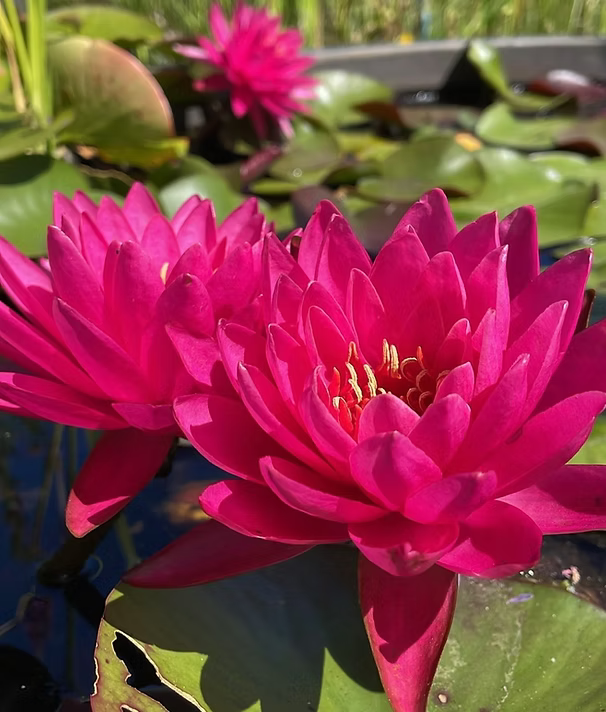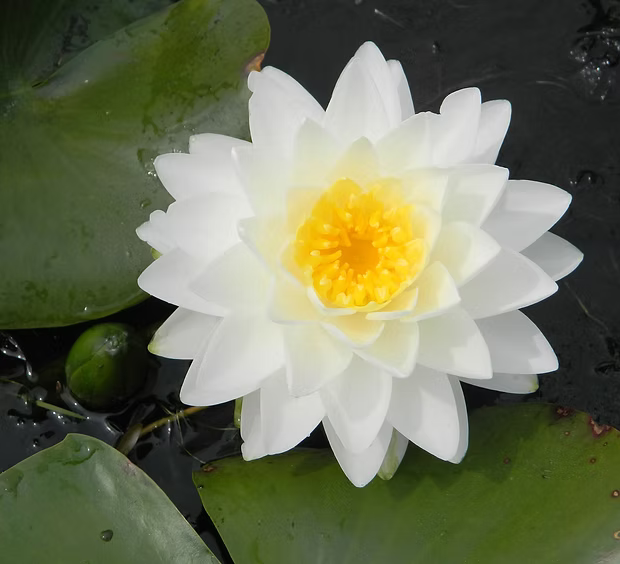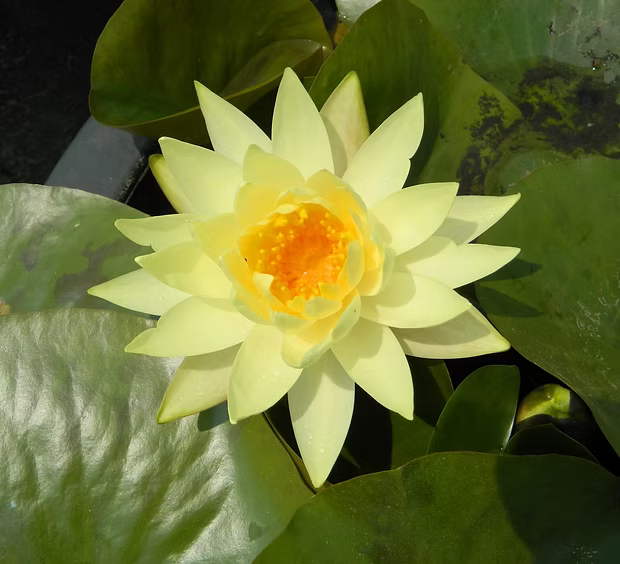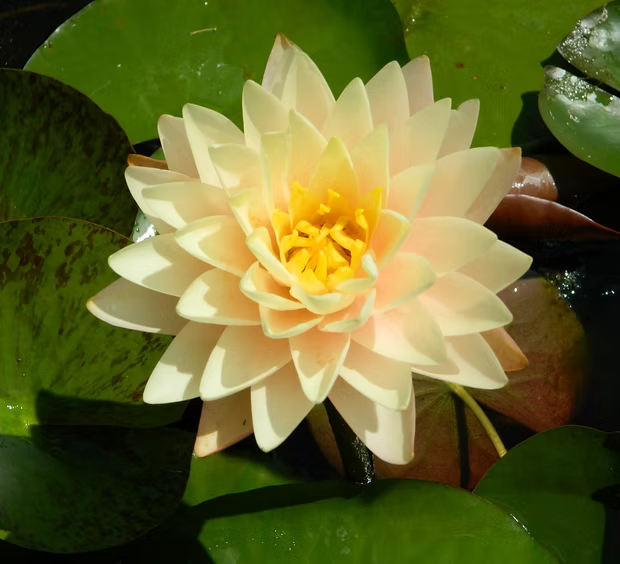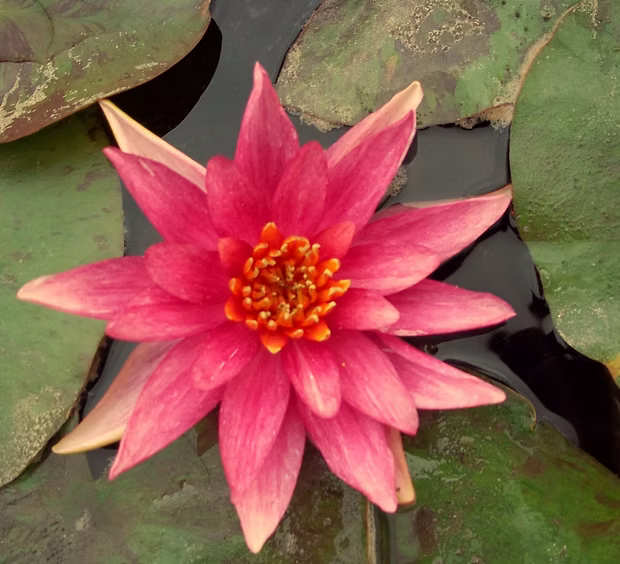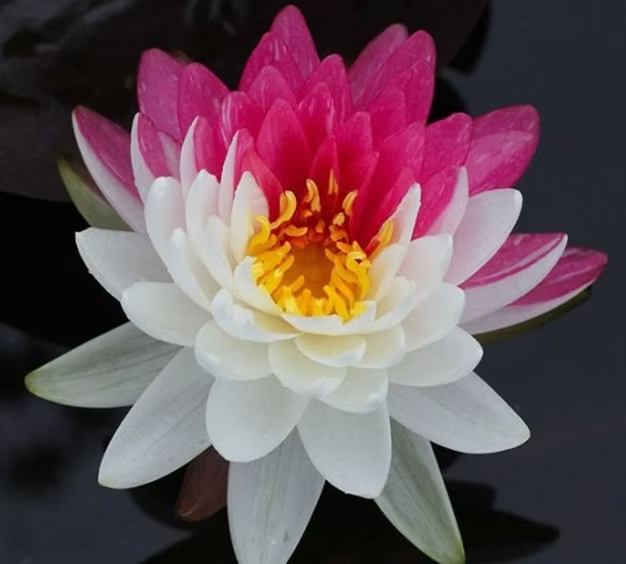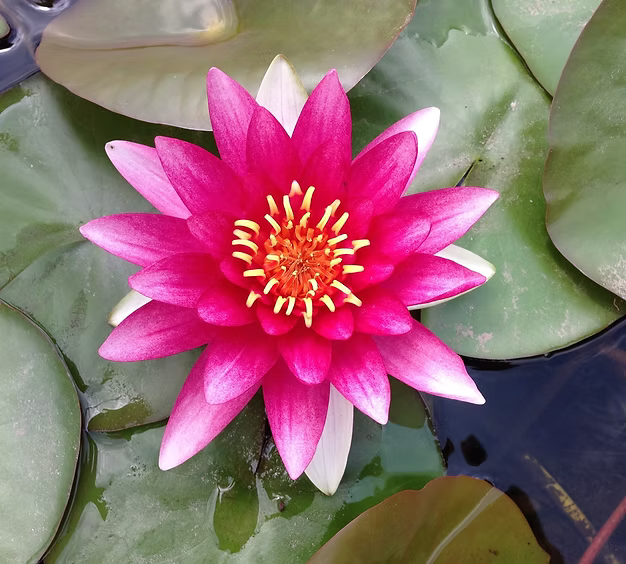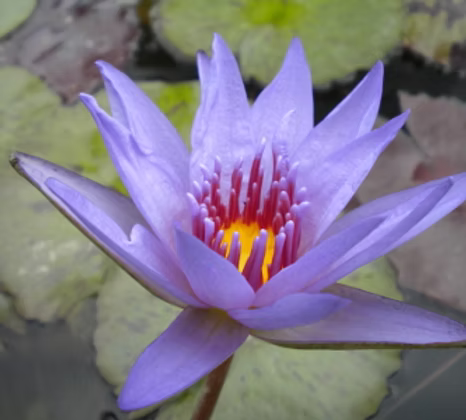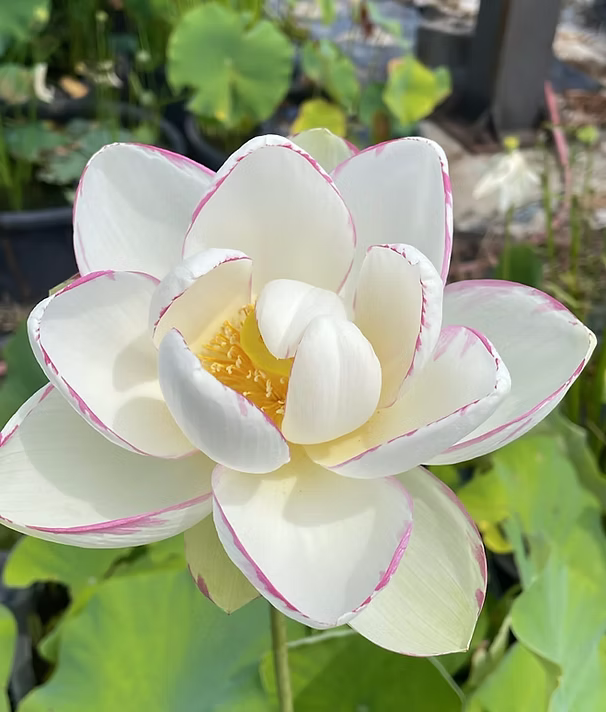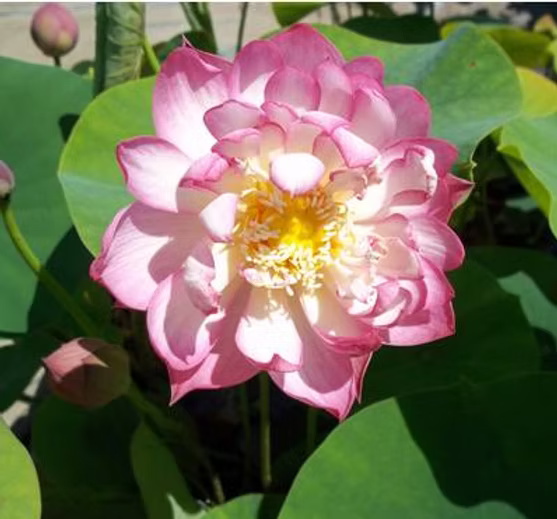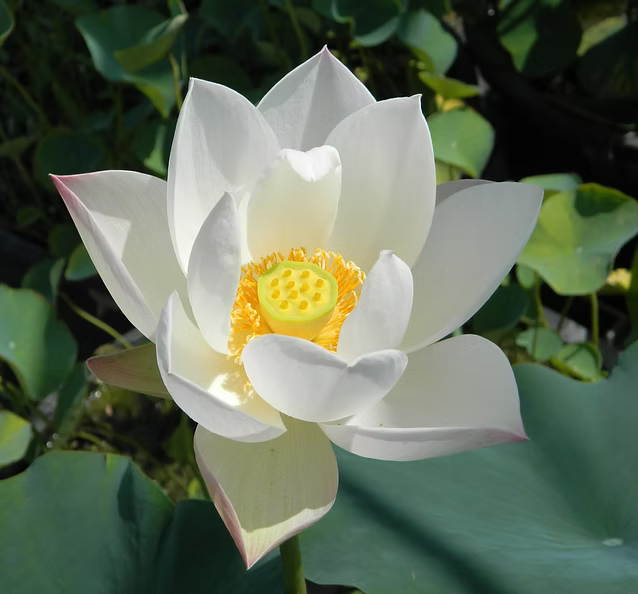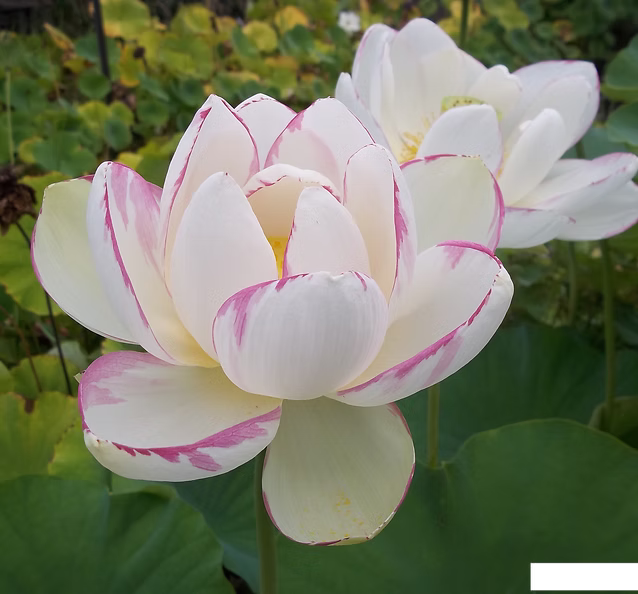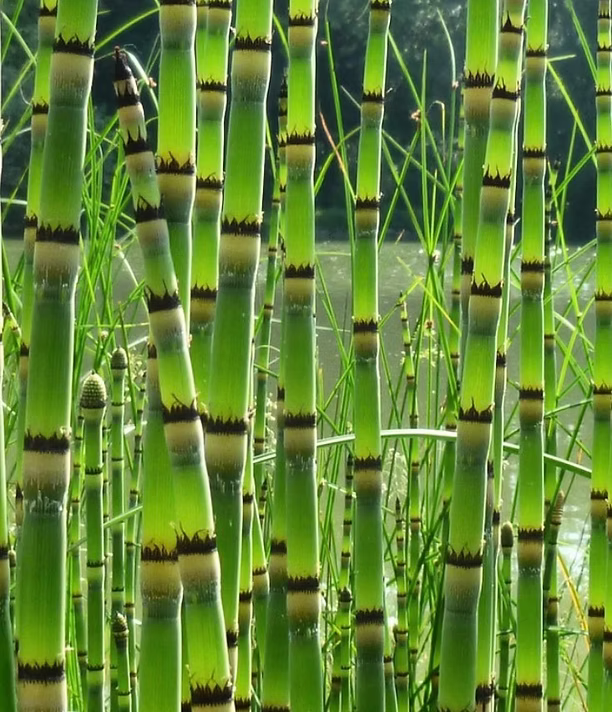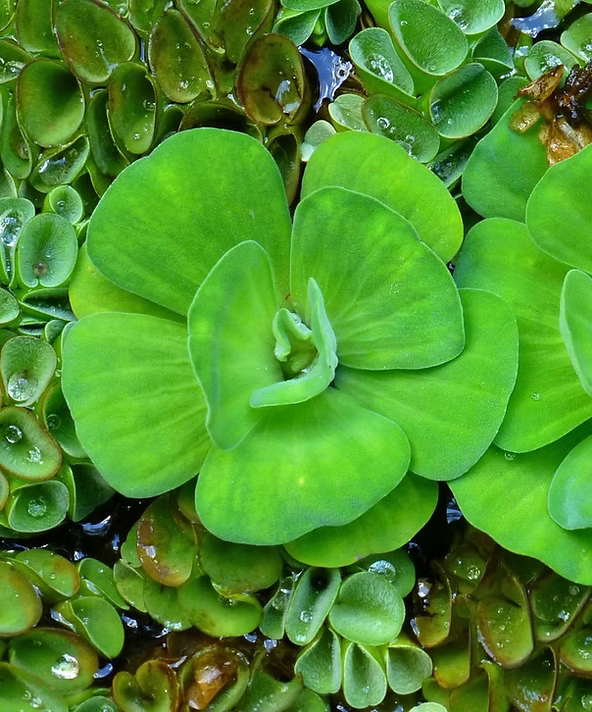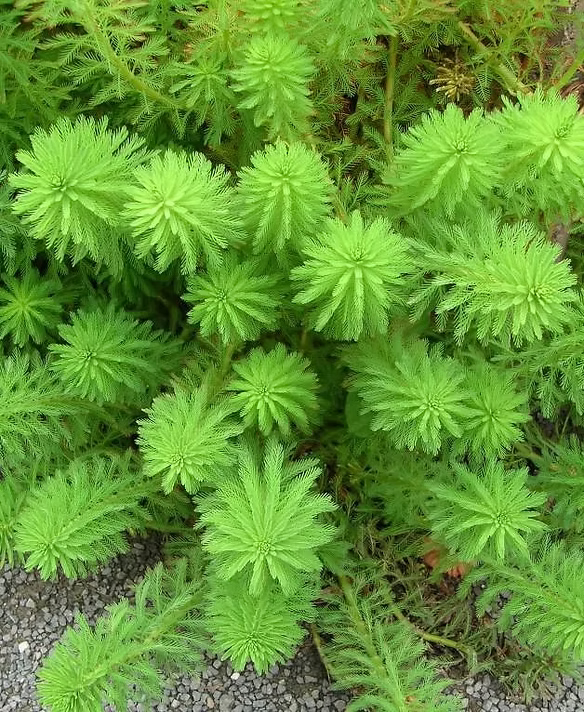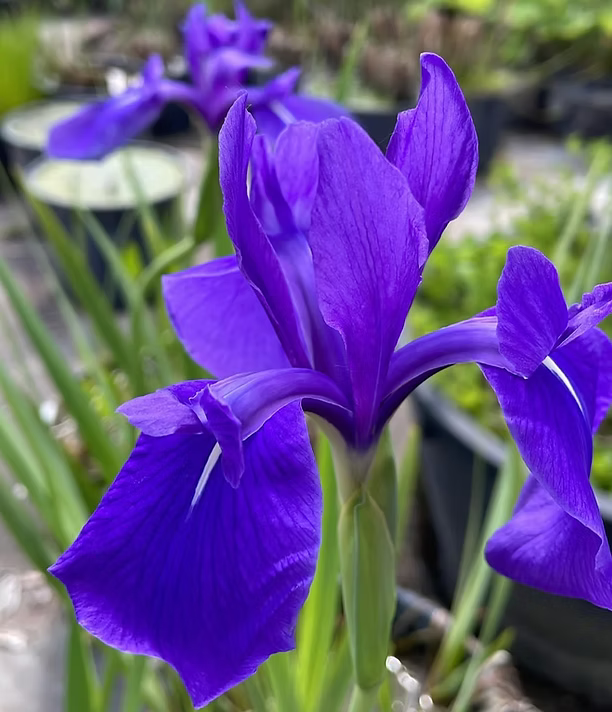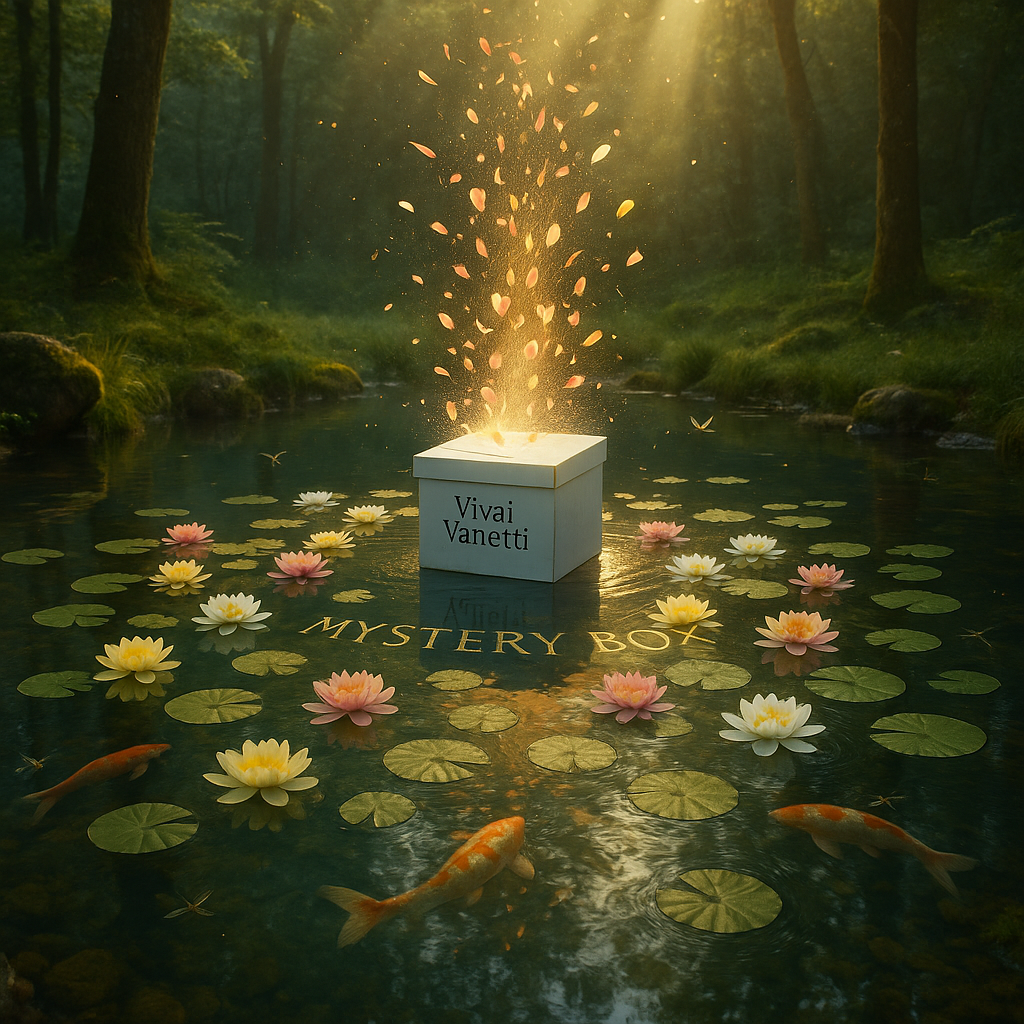All products for sale
263 products
263 products
Sort by:
𝗠𝘆𝘀𝘁𝗲𝗿𝘆 𝗕𝗼𝘅 𝗡𝗶𝗻𝗳𝗲𝗲 𝗮 𝗽𝗮𝗿𝘁𝗶𝗿𝗲 𝗱𝗮 𝟰𝟵€ 🎁
All’interno potrai avere in omaggio delle Ninfee uniche e rare come
🌺Una Detective Erika per un valore di 180€
🌸Una Tropic Star dal valore di 80€
🪷Una Tan Khwan dal valore di 70€
💮Una Garry Wagner dal valore di 140€
Un premio non esclude l’altro quindi con soli 49€ potreste portarvi a casa 470€ di premi.
Abbiamo 2 tipologie di 𝗠𝘆𝘀𝘁𝗲𝗿𝘆 𝗕𝗼𝘅 𝗡𝗶𝗻𝗳𝗲𝗲 una da 49€ e una da 99€.
Acquistando quella da 99€ si ha più probabilità di vincere ninfee dal valore di 180€
Il valore di acquisto è garantito quindi sarete così fortunati da vincere questi premi avrete comunque di fiori spettacolari ✨
⚠️ L’OFFERTA È VALIDA FINO AD ESAURIMENTO SCORTE ⚠️
Utricularia vulgaris (Bladderwort)
Utricularia vulgaris is an aquatic plant with bipinnate, hair-like leaves, equipped on their lower surface with small transparent vesicles called utricles . These structures have a dual function:
- Insect Trapping: The utricles trap small insects, providing additional nourishment to the plant.
- Floating: During the flowering stage, the utricles fill with air, helping the plant float and emerge from the surface of the water.
The inflorescence of Utricularia vulgaris consists of a raceme of golden-yellow flowers that bloom from June to August, enriching the aquatic environment with delicate touches of color.
Plant Information:
- Exposure: Full sun or partial shade
- Flowering: June - August
IRIS PSEUDACORUS (Water iris)
Rustic Aquatic Plant with Golden Yellow Flowers and Decorative Leaves
Iris Pseudacorus, also known as Water Iris, is an extremely rustic and versatile aquatic plant, ideal for decorating ponds and humid gardens. Its blue-green leaves, as tall as the stem, add an elegant touch to the landscape, while the large golden yellow flowers, chosen as a heraldic coat of arms by the French king Louis VII, give it a historical and decorative charm. Thanks to its ability to filter dissolved pollutants, this plant is widely used for phytoremediation. It also grows well in soils with little water, making it perfect for different environmental situations.
Characteristics :
- Elegant Leaves : Blue-green, as tall as the stem, ideal for a refined ornamental effect.
- Golden Yellow Flowers : Large and bright, a symbol of history and natural beauty.
- Phytoremediation : Improves water quality by purifying bodies of water and ponds.
- Rusticity and Versatility : Suitable for variable environmental conditions, including areas with little water.
- Exposure : Prefers full sun or partial shade for optimal flowering.
- Plant height : 50-80 cm in moist soil.
- Flowering period : From May to June.
With Iris Pseudacorus, give your aquatic garden a plant that combines functionality, aesthetics and a rich historical tradition, ideal for decorating and purifying aquatic environments.
LAYDEKERI PURPURATA
(Latour-Marliac - 1894)
Laydekeri Purpurata is a charming and dynamic water lily, known for its numerous medium-large cup-shaped flowers. The flowers, initially a delicate light pink, gradually darken, reaching a vibrant red on the third day of opening. This color transition, combined with the elegant shape of the flowers, makes Laydekeri Purpurata an ideal choice for enriching aquatic gardens with a touch of color and vitality.
Characteristics :
- Dynamic Flowers : Medium-large and cup-shaped, with a unique color transition from light pink to deep red.
- Abundant flowering : Numerous flowers that guarantee a continuous visual impact.
- Suitable for Elegant Ponds : Perfect for enhancing bodies of water of any size.
- Tradition and Refinement : A historic variety that combines timeless beauty and vivacity.
With Laydekeri Purpurata, enrich your pond with a water lily that combines elegance and surprising chromatic dynamism, perfect for creating a unique atmosphere.
Marsh rose
Rosa palustris is a unique herbaceous perennial that tolerates moist soils. Although it can grow in partial shade, the plant flowers more abundantly when placed in full sun. It forms a beautiful bush with a drooping habit, helping to create a soft and natural effect in humid gardens.
The flowers of Rosa palustris have five petals, are solitary and very fragrant. Their color is pink, with clearly visible yellow stamens. After flowering, in autumn the fruits appear: bright scarlet red berries that remain on the shrub throughout the winter, adding visual interest to the cold season.
Plant Information:
- Exposure: Full sun or partial shade
- Flowering: June - July
- Height in moist soil: 50–100 cm
Rosa palustris is ideal for moist garden borders, flower beds and areas where the soil is constantly moist, offering scented blooms and decorative winter fruit.
Spirodela polyrhiza
S pirodela polyrhiza is an aquatic plant belonging to the Lemnaceae group, distinguishable by its fronds which are larger than those of Lemna minor. Its leaflets are entirely green and have evident veins on the upper surface. Numerous root systems develop under each leaflet, making the plant particularly efficient in absorbing nutrients.
Uses in Phytoremediation: Like other lemnaceae, Spirodela polyrhiza is widely used in the United States and other parts of the world for phytoremediation. Its ability to grow rapidly and absorb large amounts of nutrients makes it ideal for the treatment of municipal and agro-industrial wastewater, helping to remove pollutants and improve water quality in an environmentally friendly way.
Plant Information:
- Exposure: Full sun
- Flowering: June - August
Spirodela polyrhiza thrives in well-lit environments and, thanks to its adaptability and resistance, is an excellent choice for phytoremediation systems and for the decoration of ponds and aquariums.
Pink Astilbe
Pink Astilbe is a perennial and rustic herbaceous plant, much appreciated for its elegance and the beauty of its pink flowers. The leaves, finely engraved, have coppery reflections during youth and take on a dark green color with maturity. The small pink flowers are gathered in soft feathery panicles that stand out above the foliage, creating a delicate and scenic effect.
Plant Information:
- Height: 60–90 cm in moist soils
- Flowering: June - August
- Exposure: Suitable for full sun, partial shade and shade, as long as the soil remains moist
This plant is ideal for borders and areas of the garden with high humidity, offering a touch of sophistication and color even in partially or fully shaded areas.
Lemna minor (Duckweed)
Lemna minor is a small floating leaflet, known as duckweed. Each leaflet is about 2-3 mm in diameter, smooth and bright green on the upper side, while the lower side tends to be reddish-brown. These tiny plants live in dense colonies and form a thick carpet on the surface of the water.
Uses in Phytoremediation: Lemna minor is widely used in phytoremediation systems. Lemna-based systems are patented and represent one of the most effective solutions for:
- Remove heavy metals dissolved in water.
- Counteract excess phosphates.
- Reduce excess ammonium nitrogen.
Thanks to its rapid growth and ability to absorb nutrients and harmful substances, Lemna minor is an ecological and sustainable tool for water treatment and purification.
Plant Information:
- Exposure: Full sun
This plant thrives in full sun and contributes significantly to the cleanliness and maintenance of water quality in ponds, aquaponics systems or specially set up aquariums.
RED WATER MINT
Aromatic and Ornamental Aquatic Plant
Mentha Aquatica Rubra is a fragrant and decorative aquatic plant, ideal for ponds, humid gardens and areas with little water. Its oval leaves, bright green in the shade, take on a suggestive purple hue when exposed to the sun. The pretty lilac flowers, gathered in globose inflorescences, add a delicate touch during the summer flowering period. In addition to its ornamental value, this plant offers a refreshing fragrance that enriches the surrounding environment.
Characteristics :
- Aromatic Leaves : Oval, bright green or purple, with an intense and refreshing scent.
- Elegant Flowers : Lilac, gathered in globose inflorescences, for a graceful, summery flowering.
- Suitable for Ponds and Moist Grounds : It grows well in little water or on constantly moist ground.
- Exposure : Prefers full sun or partial shade for optimal growth and bright colors.
- Plant height : 20-50 cm in moist soil.
- Flowering period : From July to September.
With Mentha Aquatica Rubra, add to your water garden a plant that combines beauty, aroma and functionality, ideal for creating a lively and harmonious atmosphere.
VIRGINALIS
(Latour-Marliac - 1910)
Virginialis is one of the largest white hardy water lilies, an iconic variety that combines majesty and delicacy. Its tulip-shaped flowers are distinguished by their elongated petals of pure white and their delicate scent. With both early and late flowering, Virginialis guarantees an elegant and continuous presence in your aquatic garden.
Characteristics :
- Impressive Size : Among the largest of the rustic white water lilies, ideal for ponds and large bodies of water.
- Floral Elegance : Tulip-shaped flowers with elongated petals of an intense white.
- Long-Blooming : Blooms in both early and late seasons, providing beauty for much of the year.
- Delicate Fragrance : A natural aroma that enriches any garden.
Virginialis is the perfect choice for those looking for a water lily that combines size, refinement and long-lasting flowering.
MARLIACEA CHROMATELLA
(Latour-Marliac - 1887)
Marliacea Chromatella is a timeless classic water lily, prized for its large, cup-shaped flowers of a uniform pale sulphur yellow that add elegance and brightness to any water garden. This variety is highly re-flowering and will also grow successfully in partially shaded positions, making it versatile and easy to grow. Winner of the prestigious Royal Horticultural Society (RHS) award, Marliacea Chromatella is a symbol of botanical excellence.
Characteristics :
- Refined Flowers : Large, cup-shaped, with a delicate and uniform pale sulphur yellow colour.
- High Repeat Flowering: Blooms repeatedly to ensure continued beauty.
- Versatile : It grows well even in partially shaded positions.
- Prestigious Awards : Awarded by the RHS for its quality and beauty.
With Marliacea Chromatella, your water garden will become an oasis of charm and refinement, ideal for enthusiasts and collectors.
Callitriche verna (Shrimp's grass)
Callitriche verna is a perennial plant characterized by leaflets that take on two different shapes:
- The emerged or floating leaves have a star shape.
- The submerged leaves are more linear and end in a point.
The small flowers bloom in the axils of the leaves. The plant lives in colonies in cold and flowing waters, preferring partially shaded positions. It does not tolerate depths greater than 20 cm and continues to grow even during the winter. Thanks to its adaptability, it is also suitable for aquariums.
Now Playing:
- Currently unavailable.
Plant Information:
- Exposure: Partial shade
- Flowering: March - June
HOUTTUYNIA CORDATA
Ornamental and Ground Cover Aquatic Plant
Houttuynia Cordata is a hardy, groundcover herbaceous perennial that is ideal for decorating water gardens and moist soils. Its branched, vibrant red stems support dark green, heart-shaped leaves with a reddish tinge on the underside. When rubbed, the leaves release a delicious orange scent. The delicate, white, four-petalled flowers are gathered in conical heads that add a touch of grace. This plant is known for its vigorous and sometimes invasive growth, perfect for covering large areas with ease.
Characteristics :
- Scented Leaves : Heart-shaped, dark green with reddish shades and a pleasant orange aroma.
- Elegant Flowers : White, with four petals, gathered in conical heads.
- Vigorous Growth : Ground cover and rustic, perfect for covering large surfaces.
- Suitable for Moist Grounds and Ponds : It grows both in shallow water and on moist soils.
- Exposure : Prefers full sun or partial shade.
-
Depth and Height :
- Vegetation above water : 30-50 cm.
- Depth under water : 0-5 cm.
- Flowering period : From July to September.
With Houttuynia Cordata, add to your water garden a plant that combines aesthetics, scent and practicality, ideal for creating a lively and scented environment.
MARSILEA QUADRIFOLIA (Water four-leaf clover)
Ornamental and Resistant Aquatic Fern
Marsilea Quadrifolia, known as the Water Four-Leaf Clover, is a fascinating and versatile aquatic fern, ideal for ponds, wetlands and aquariums. Its characteristic light green, four-leaf clover-like leaves make it a unique decorative choice. Frost-resistant, this plant grows even in little water and is suitable for aquariums, where it will tend to emerge and float. As a protected species, it is a valuable plant for those who want to create a harmonious and sustainable aquatic garden.
Characteristics :
- Unique Leaves : Four-leaf clover shaped, light green in colour, perfect for a natural decorative effect.
- Hardy and Versatile : Tolerates frost and grows well in little water or moist soil.
- Suitable for Aquariums : Ideal for aquariums, although it tends to surface and float.
- Protected Species : A special plant that enriches any aquatic garden.
- Exposure : Prefers full sun or partial shade.
- Plant height : 10-30 cm in moist soil.
With the Marsilea Quadrifolia, bring a unique and resistant fern to your garden or aquarium, which combines aesthetics and functionality to create a natural and serene environment.
Hemerocallis fulva
Hemerocallis fulva is a rustic herbaceous perennial characterized by ribbon-like leaves, light green, arched and gathered in tufts. Its large dark orange flowers, similar to those of lilies, are particularly showy during flowering. After the flowering period, it is advisable to cut the stems at ground level to encourage the plant's regeneration and maintain a tidy appearance.
Plant Information:
- Exposure: Full sun or partial shade
- Flowering: June - August
- Height in moist soil: about 100 cm
This plant adapts well to moist soils and different light conditions, making it ideal for gardens, borders or areas where a summer flowering with great visual impact is required.
Sisyrinchium angustifolium
Sisyrinchium angustifolium is a perennial herbaceous plant native to North America, belonging to the Iridaceae family. The plant has narrow linear leaves that grow in compact tufts. Above these tufts, thin flattened flowering stems rise, which support splendid inflorescences.
The flowers of Sisyrinchium angustifolium are hermaphroditic and of a delicate blue-purple color, composed of 6 petals. The flowering is prolonged and the flowers appear for several weeks during the summer, giving an ornamental and constant appearance to the plant.
Plant Information:
- Exposure: Full sun or partial shade
- Flowering: July - September
- Height in moist soil: 20–50 cm
Sisyrinchium angustifolium thrives in moist, well-drained soil and adapts to a variety of light conditions. With its blue-purple flowers and long flowering season, it is an excellent choice for borders, beds, or water gardens, where it adds color and visual interest throughout much of the summer.
Typha latifolia (Deaf mace)
Suitable for large ponds, Typha latifolia is characterized by leathery, linear and ribbon-like leaves. The most distinctive part of this plant is the female inflorescence: a velvety brown cylinder that almost touches the male one, located in the upper part of the stem. This characteristic makes the plant very decorative and is often used in dried flower arrangements.
In addition to its aesthetic value, Typha latifolia is used in phytoremediation thanks to its high capacity to absorb heavy metals such as copper, lead and zinc dissolved in water, thus contributing to the purification of aquatic environments.
Characteristics of the Plant:
- Exposure: Full sun
- Flowering: July - September
- Height above water level: 150–200 cm
- Depth below water level: 5–10 cm
FAQs
Use this text to answer questions in as much detail as possible for your customers.
Ogni pianta ha esigenze specifiche, ma in generale, le radici delle piante palustri devono essere immerse nel substrato, mentre le galleggianti vanno lasciate libere in superficie. L'uso di fertilizzanti naturali e il controllo della luce solare aiutano a mantenerle in salute. Ti invieremo una guida dettagliata con il tuo acquisto.
Sì! Le piante ossigenanti come il ceratophyllum assorbono i nutrienti in eccesso e riducono la crescita delle alghe. Le piante galleggianti come la lattuga d’acqua forniscono ombra e limitano l’evaporazione, contribuendo all’equilibrio dell’ecosistema acquatico.

